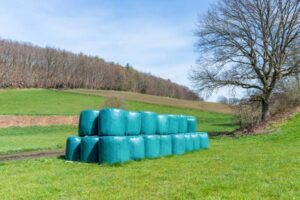Greenhouse net replacement film offers a host of benefits.
In agriculture, innovative solutions are continuously sought to improve productivity and sustainability. One advancement that has caught the attention of farmers globally is the advent of greenhouse net replacement film.
 Touted for its cost-effectiveness and efficiency, this technology offers a promising alternative to traditional glass or plastic greenhouses. Greenhouse net replacement film provides the same degree of temperature control and protection from pests, elements and disease but at a fraction of the cost.
Touted for its cost-effectiveness and efficiency, this technology offers a promising alternative to traditional glass or plastic greenhouses. Greenhouse net replacement film provides the same degree of temperature control and protection from pests, elements and disease but at a fraction of the cost.
Affordability and Efficiency
Affordability is a significant factor behind the increasing adoption of this technology. It costs considerably less to install and maintain a greenhouse with net replacement film than traditional materials.
Moreover, these films are made from sustainable, recyclable materials, reducing the environmental impact. These factors contribute to a lower overall cost of ownership, making them an attractive option for small-scale and large-scale farmers.
In terms of efficiency, net replacement films are designed to improve air circulation and ventilation within the greenhouse. This enhances crop health by allowing for better airflow, controlling humidity levels and preventing fungal infections. Furthermore, these films also provide excellent light diffusion, resulting in higher yields.
Growing Popularity
As farmers become increasingly aware of its benefits, the global demand for greenhouse net replacement film is expected to rise substantially. Recent reports show that the market will continue to grow at a CAGR of 11.8% from 2020-2027.
Furthermore, innovators are continually striving to improve the technology. For instance, advanced films with UV-resistant and anti-fogging properties have emerged recently. These features protect crops from harsh weather conditions and ensure maximum visibility for growers.
Greenhouse net replacement film is making strides in revolutionising the agricultural industry. Its cost-effectiveness, environmental friendliness and efficiency could soon become a staple of modern farming.
This technology presents great potential for improving agricultural efficiency and sustainability. As more research is conducted into its effects, we will likely see a greater uptake of greenhouse net replacement film shortly.
Improved Crop Yield
Greenhouse net replacement film also offers improved crop yield. Providing an optimal environment for crop growth contributes to increased productivity. These films allow for better control of light quality and intensity, temperature, and moisture levels. This improved environmental control can result in healthier crops, higher yields, and increased farmer profits.
Additionally, the shorter growing cycles and more predictable harvest times associated with this technology benefit farmers. This allows them to maximise profits by producing higher-quality crops in less time.
Adaptability
The adaptability of these films is another compelling advantage. They can be easily replaced or adjusted to cater to different crop varieties or changing weather conditions. This flexibility is advantageous in regions with extreme weather or for farmers who grow diverse crops.
Moreover, this technology can be used in various types and sizes of greenhouses. It is suitable for both high-tech hydroponic operations, as well as small-scale vegetable farming.
Potential Challenges
Despite these advantages, it’s important to consider potential drawbacks. For instance, installation and maintenance require specific expertise, and the initial cost, though lower than traditional greenhouses, can still be significant for small-scale farmers.
However, these challenges can be mitigated with adequate training and access to supportive agricultural programs.
The Future of Farming
Looking forward, greenhouse net replacement film seems to be a viable solution for the future of farming. It offers an innovative, efficient, and cost-effective method of improving crop yields while reducing environmental impact.
However, as with any new technology, continued research and development are crucial to enhance its benefits further and address any potential drawbacks. Still, the promise it holds for the future of sustainable and productive farming is undeniable.
Conclusion
Greenhouse net replacement film is an innovative solution that can revolutionise agricultural practices. By providing cost-effective protection and improved efficiency, this technology allows farmers to improve their yields while reducing operational costs. With its growing popularity, we will likely see widespread adoption of this technology shortly.
For farmers looking to explore this solution, we recommend contacting a specialist agricultural supplier for advice on how best to implement it. With the right guidance, greenhouse net replacement film could potentially revolutionise farming as we know it today.